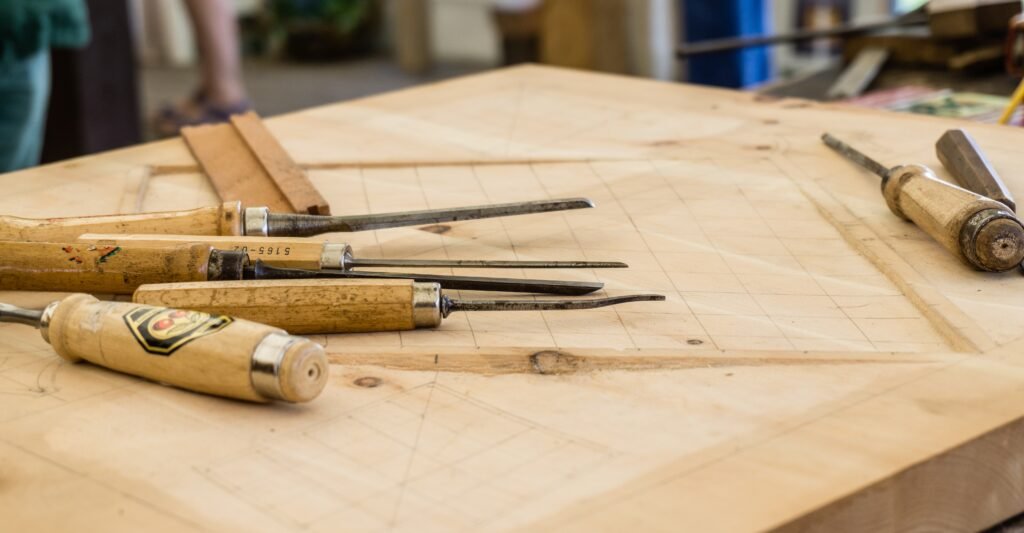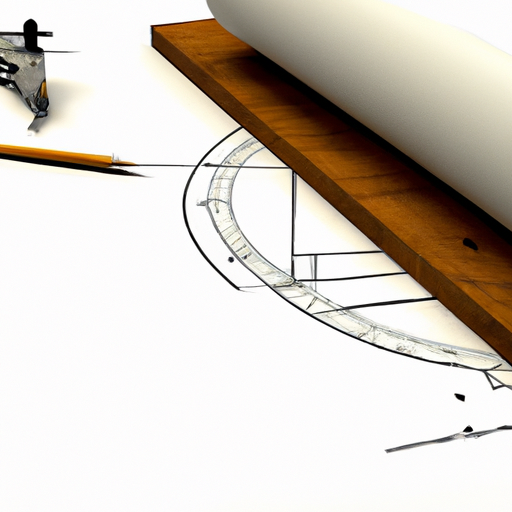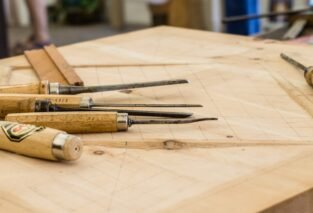In this article, you will learn how to read and interpret woodworking plans and blueprints. We will cover the basics of understanding measurements, symbols, and various types of drawings. By the end, you’ll have a good grasp of the information presented in woodworking plans and be able to confidently tackle your next project. So let’s get started!

Introduction to Woodworking Plans
Woodworking plans and blueprints are essential tools for anyone interested in woodworking. Whether you are a beginner or an experienced woodworker, understanding how to read and interpret these plans is crucial to the success of your projects. In this article, we will explore the importance of reading and interpreting woodworking plans, the different types of plans available, and the skills and knowledge required to decipher them. So, grab your measuring tape and get ready to dive into the world of woodworking plans and blueprints!
Importance of Reading and Interpreting Plans
Woodworking plans serve as a blueprint for your project. They provide step-by-step instructions, measurements, and diagrams that guide you through the entire construction process. Without a proper understanding of these plans, you may find yourself wasting time, money, and materials on a project that doesn’t turn out as expected. By taking the time to read and interpret woodworking plans correctly, you can ensure that you have a clear vision of the project and avoid costly mistakes along the way.
Types of Woodworking Plans and Blueprints
Woodworking plans come in various forms, depending on the complexity of the project and the level of detail provided. Here are some common types of woodworking plans you may encounter:
1. Sketches and Drawings
These are basic plans that typically include hand-drawn sketches or digital renderings of the project. They provide a general overview of the design and dimensions but may lack specific details and measurements.
2. Floor Plans and Elevations
Floor plans and elevations are more detailed plans that show the project from multiple perspectives, including top-down and side views. They typically include measurements and dimensions, allowing you to visualize the project in three dimensions.
3. Perspective and Isometric Views
Perspective and isometric views provide a three-dimensional representation of the project, allowing you to see how different components fit together. These plans are especially helpful for complex projects and can help you understand how the final product will look.
4. Sectional and Detail Drawings
Sectional and detail drawings provide a closer look at specific parts of the project, such as joints or intricate details. These plans are crucial for understanding how different components fit together and how to create complex joinery.
Understanding the different types of woodworking plans will help you choose the most appropriate plan for your needs and enable you to navigate through the instructions with ease.
Deciphering the Symbols and Measurements
Once you have selected a woodworking plan, it’s important to familiarize yourself with the symbols and measurements used in the plan. This will help you understand the instructions and ensure that you follow them accurately. Let’s delve into some key aspects of deciphering woodworking plans.
Comprehending Woodworking Symbols
Woodworking plans often use symbols to represent different elements or actions. For example, a circle with an X may indicate where nails or screws should be placed, while parallel lines signify a dado or groove. It is essential to refer to the plan’s legend or key to understand the meaning of these symbols. Each plan may have its own set of symbols, so take the time to familiarize yourself with them before starting the project.
Understanding Measurements and Scales
Measurements are a fundamental part of woodworking plans. They provide the dimensions for each component of the project, ensuring accuracy and proper fit. Woodworking plans may use different units of measurement, such as inches or millimeters, so make sure to check the plan for the units used. Additionally, plans often include scale drawings, where each unit on the plan represents a certain number of units in real life. Pay attention to the scale and use a measuring tape to verify the dimensions before cutting any materials.
Identifying Material and Cut Lists
Woodworking plans usually include a material list, listing all the necessary wood, hardware, and other materials required for the project. This list will help you gather all the materials in advance, ensuring that you have everything you need before you begin. Additionally, plans often include a cut list, specifying the dimensions and number of pieces needed for each component. Take the time to review the cut list and mark the pieces accordingly to avoid confusion during the construction process.

Analyzing Plan Layouts and Drawings
Understanding how to read different plan layouts and drawings is essential in interpreting woodworking plans accurately. Let’s explore some common types of plan layouts and drawings you may encounter.
Reading Floor Plans and Elevations
Floor plans and elevations provide a bird’s-eye view and side view of the project, respectively. These plans give you a clear understanding of the overall dimensions and layout of the project. Key measurements and labels are included to help you identify each component and its position within the project. Take the time to study these plans carefully, ensuring that you have a clear understanding of how each component fits together.
Interpreting Perspective and Isometric Views
Perspective and isometric views provide a three-dimensional representation of the project. These drawings are crucial in understanding how different components fit together and how the final project will look. Pay close attention to the angles and dimensions provided in these drawings to ensure accurate assembly.
Exploring Sectional and Detail Drawings
Sectional and detail drawings provide a closer look at specific parts of the project, such as joints or intricate details. These drawings show the internal structure of the project, enabling you to understand how different components fit together. Analyze these drawings carefully, as they provide critical information for creating complex joinery and ensuring precise construction.
Identifying Woodworking Techniques and Tools
Woodworking plans often include instructions on specific woodworking techniques and the tools required to complete them. Understanding these techniques and tools is crucial in executing the project successfully. Let’s explore some key aspects of identifying woodworking techniques and tools within plans.
Recognizing Woodworking Joints and Joinery Methods
Woodworking plans often specify specific joints and joinery methods to be used in the project. Whether it’s a simple butt joint or a complex dovetail joint, understanding the instructions and diagrams provided in the plan will ensure that you create strong and durable connections between the project components. Take the time to learn about the different woodworking joints and joinery methods to expand your knowledge and skillset.
Understanding Tool Usage and Recommendations
Woodworking plans typically include a list of tools required for the project. These tools may range from a basic set of hand tools to specialized machinery. It is important to understand how to use these tools correctly and safely before beginning the project. If you are unfamiliar with a particular tool or technique, consider researching or seeking guidance from experienced woodworkers to ensure you are using the correct tools and techniques for the job.
Assessing Required Skill Levels
Woodworking plans often indicate the skill level required to complete the project successfully. This information can help you determine if the project is suitable for your current skill level. If a plan is labeled as “advanced,” it may involve more complex joinery or techniques that require advanced woodworking skills. Assess your own skill level honestly and choose projects that match your abilities and experience.

Grasping Woodworking Terminology and Abbreviations
Woodworking plans often include specific terminology and abbreviations that may be unfamiliar to beginners. Taking the time to familiarize yourself with these terms and abbreviations will help you understand the instructions accurately. Let’s explore some key aspects of grasping woodworking terminology and abbreviations.
Common Terminology in Woodworking Plans
Woodworking plans often use specific terms to describe different components, techniques, or actions. For example, terms such as “miter,” “rip,” or “chamfer” refer to specific cuts or shaping methods. Understanding these common terms will ensure that you can follow the instructions accurately and execute the project as intended.
Interpreting Abbreviations and Keynotes
Abbreviations and keynotes are commonly used in woodworking plans to save space and provide concise instructions. For example, “R/L” may indicate right and left sides, while “WF” may refer to a specific wood species. Refer to the plan’s legend or key to understand the meaning of these abbreviations. If a plan does not provide a legend, consider researching common woodworking abbreviations or asking for clarification from experienced woodworkers.
Explaining Glossaries and Reference Guides
Some woodworking plans may include a glossary or reference guide that provides definitions and explanations of the terminology and abbreviations used in the plan. These resources can be extremely helpful, especially for beginners who are still learning the essentials of woodworking. Take advantage of these additional materials to expand your understanding of woodworking terminology and abbreviations.
Troubleshooting and Problem-Solving in Plans
While woodworking plans strive to provide accurate instructions, errors and inaccuracies can occur. It is essential to know how to identify and address these issues to ensure a successful project. Let’s explore some common troubleshooting and problem-solving strategies for woodworking plans.
Identifying Errors and Inaccuracies
Carefully review the woodworking plan before starting the project. Look for inconsistencies, missing information, or conflicting instructions. If you notice any errors or inaccuracies, consult other sources such as woodworking forums, online resources, or experienced woodworkers to clarify the issue. Taking the time to identify and address potential errors early on will save you frustration and wasted materials down the road.
Solving Measurement and Dimension Issues
Measurement and dimension issues can arise when reading and interpreting woodworking plans. If you encounter conflicting or unclear measurements, use your judgment and refer to other parts of the plan that provide context. You can also take measurements directly from the project components and use those as a reference to ensure accuracy. When in doubt, consult experienced woodworkers or professionals for guidance.
Modifying Plans for Personal Needs
Sometimes, you may need to modify a woodworking plan to suit your specific requirements. This could involve scaling up or down the size of the project, changing the design, or using different materials. Before making any modifications, thoroughly understand the original plan and its construction methods. Consider consulting experienced woodworkers or professionals to ensure that your modifications are feasible and will not compromise the integrity of the project.

Considering Material Selection and Estimation
Choosing the right materials for your woodworking project is crucial for its success. Woodworking plans often include recommendations for wood species, grades, and other materials. Let’s explore some key aspects to consider when selecting materials and estimating quantities and costs.
Selecting Appropriate Wood Species and Grades
Wood species and grades can greatly impact the final appearance, durability, and cost of your project. Consider the purpose and location of your project, as well as your personal preferences and budget, when selecting a wood species. Hardwoods like oak and maple are known for their strength and durability, while softwoods like pine and cedar are commonly used for outdoor projects. Additionally, pay attention to the grade or quality of the wood, as this will affect its appearance and workability. For the best results, select a wood species and grade that align with your project’s specific needs.
Estimating Quantities and Costs
Woodworking plans typically include a material list, which provides a starting point for estimating the quantities and costs of the required materials. Use the measurements and dimensions provided in the plan to calculate the amount of wood, hardware, and other materials needed. Consider adding a buffer or purchasing extra materials to account for potential mistakes or unforeseen circumstances. Additionally, research the current market prices for the materials you require to get an accurate cost estimate for your project.
Evaluating Material Recommendations
Woodworking plans may make specific material recommendations based on the project’s requirements. While it is advisable to follow these recommendations, keep in mind that there may be alternative materials that can achieve the same or similar results. Before deviating from the plan’s material recommendations, consider the implications on the project’s structural integrity, appearance, and overall functionality. If in doubt, consult experienced woodworkers or professionals for guidance.
Following Step-by-Step Instructions
Once you have familiarized yourself with the woodworking plan, it’s time to follow the step-by-step instructions provided. Properly organizing and sequencing your tasks is crucial for the success of your project. Let’s explore some key aspects to consider when following step-by-step instructions in woodworking plans.
Organizing and Sequencing Tasks
Read through the entire plan, from start to finish, to get a comprehensive understanding of the project’s sequence. Identify any dependencies or prerequisites that tasks may have on one another. Create a logical order for your tasks, ensuring that each step builds upon the previous one. By organizing and sequencing your tasks effectively, you will maintain momentum and avoid unnecessary rework.
Understanding Assembly Procedures
Woodworking plans typically include specific instructions on how to assemble the project components. Pay close attention to these procedures, as they will dictate the final outcome of your project. Use clamps or other holding mechanisms to ensure that the components are properly aligned during assembly. Take your time and follow the instructions meticulously to achieve the best results.
Ensuring Order and Safety
While following the woodworking plan’s instructions, prioritize safety at all times. Wear appropriate safety gear, such as safety glasses and ear protection, when using power tools or handling materials. Ensure that your workspace is clear of clutter and that all tools and equipment are in good working condition. Additionally, double-check your measurements and calculations to avoid mistakes that could compromise the structural integrity or appearance of the project.

Exploring Advanced Techniques and Tips
As you become more comfortable with reading and interpreting woodworking plans, you may want to explore advanced techniques and tips. These techniques can elevate your woodworking skills and expand your project possibilities. Let’s explore some key aspects of exploring advanced techniques and tips in woodworking.
Learning Advanced Woodworking Skills
Advanced woodworking skills, such as creating complex joinery or using specialized hand tools, can enhance your woodworking projects. Consider taking advanced woodworking classes or workshops to learn these skills from experienced artisans. Additionally, online resources, books, and magazines dedicated to woodworking can provide valuable insights into advanced techniques and methods.
Utilizing Specialized Tools and Equipment
As you progress in your woodworking journey, you may encounter projects that require specialized tools and equipment. These tools can improve the efficiency and accuracy of your work. Research and invest in high-quality tools that align with your specific needs and budget. Be sure to familiarize yourself with the proper usage and safety precautions associated with these tools before incorporating them into your projects.
Applying Finishing Methods and Techniques
Applying a finish to your woodworking project can enhance its appearance, protect the wood from damage, and increase its longevity. Various finishing methods and techniques, such as staining, varnishing, or painting, can be applied depending on the desired outcome. Research different finishing options and experiment with sample pieces to find the technique that best suits your project.
Conclusion
Reading and interpreting woodworking plans and blueprints is an essential skill for any woodworker. By understanding the importance of these plans, deciphering the symbols and measurements, analyzing the layouts and drawings, and identifying the techniques and tools required, you can embark on woodworking projects with confidence and precision. Remember to familiarize yourself with woodworking terminology and abbreviations, troubleshoot and problem-solve as needed, consider material selection and estimation, follow step-by-step instructions, and continually explore advanced techniques and tips. With practice, experience, and a continuous thirst for learning, you can master the art of reading and interpreting woodworking plans, opening the doors to countless woodworking possibilities. So, go ahead, grab those woodworking plans, and let the sawdust fly!





